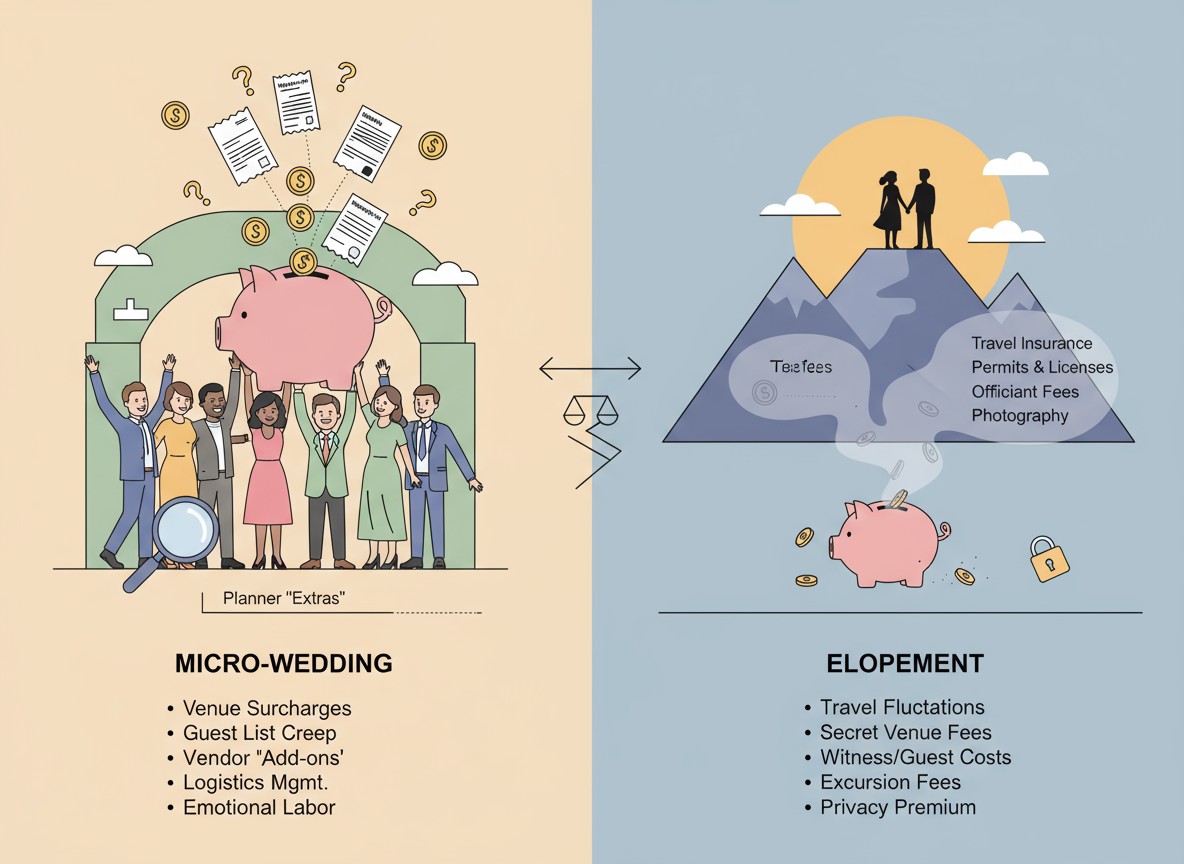naradhawedding.net: a weddings & etc.
-

Wheelchair-Accessible Wedding Venues: Beyond Just Having a Ramp
A venue claiming wheelchair accessibility often means a single ramp at the entrance and nothing more—discover the comprehensive accessibility features that determine whether wheelchair users and guests with mobility challenges can genuinely participate fully in your celebration The venue tour looks perfect until you realize the “accessible” entrance leads to a ceremony space down three…
-

Bilingual Wedding Ceremonies: Making All Guests Feel Included
When wedding guests speak different languages, ceremonies risk dividing attendees into those who understand and those who feel excluded—discover proven strategies for creating truly bilingual celebrations where every guest feels welcomed, valued, and connected to your union Your mother speaks only Mandarin, your partner’s grandmother speaks only Spanish, and half your friends are English-speaking Americans…
-

Neurodivergent-Friendly Wedding Planning: Sensory Considerations and Tips
Traditional weddings create sensory nightmares for autistic individuals, those with ADHD, sensory processing disorders, and other neurodivergent conditions—discover practical strategies for designing celebrations that honor your neurological needs without sacrificing beauty or meaning The wedding venue tour seems perfect until fluorescent lights trigger an immediate headache. The caterer offers exquisite menus featuring textures you can’t…
-

Interfaith Wedding Ceremony: How to Honor Both Religions Equally
When partners from different religious backgrounds unite, ceremony planning becomes a delicate balance of tradition, family expectations, and personal values—discover practical strategies for creating meaningful celebrations that authentically honor both faiths without diluting either tradition Your Catholic mother envisions you walking down an aisle toward a priest performing Mass. Your partner’s Jewish parents expect a…
-

Wedding Vendor Cancellation: Your Rights and What to Do Next
When your photographer, venue, caterer, or other essential vendor cancels weeks before your wedding, panic sets in—but knowing your contractual rights, recovery strategies, and legal options transforms crisis into manageable problems with concrete solutions The email arrives six weeks before your wedding date: your photographer is canceling due to “unforeseen circumstances.” You’ve paid a $2,000…
-

Destination Wedding Legalities: Making Sure Your Marriage Is Valid Back Home
Imagining your wedding ceremony on a sun-drenched Mediterranean terrace or pristine Caribbean beach creates romantic visions until you confront the reality that your marriage might lack legal recognition when you return home—understanding international marriage regulations, authentication procedures, and government recognition processes ensures your destination celebration establishes a legitimate, legally binding marriage Consider the situation facing…
-

How to Plan a Wedding When You Work Night Shifts or Irregular Hours
Nurses, emergency responders, warehouse workers, and other night shift professionals face unique wedding planning challenges—but with strategic scheduling, smart vendor selection, and creative time management, your dream celebration is absolutely achievable Planning a wedding demands countless hours of vendor meetings, venue tours, cake tastings, and dress fittings—activities conveniently scheduled during traditional business hours when most…
-

Wedding Day Emergency Kit: 47 Items Planners Actually Use
Professional wedding planners reveal the essential items that transform potential disasters into minor inconveniences—from wardrobe malfunctions to weather emergencies, beauty touch-ups to unexpected guest needs Every wedding planner has witnessed the moment when disaster strikes: a torn dress seam moments before walking down the aisle, a groomsman’s missing cufflink discovered five minutes before ceremony start,…
-

Pet-Inclusive Weddings: Beyond Just Having Your Dog as Ring Bearer
Creative, practical ways to meaningfully include your pets in your wedding celebration—from ceremony roles to reception appearances, safety planning to alternative inclusion methods when they can’t physically attend Your dog has been your companion through breakups, job changes, cross-country moves, and late-night anxiety spirals. Your cat greets you every evening and sleeps on your pillow.…
-

Micro-Wedding vs Elopement: Hidden Costs Comparison Nobody Talks About
The real cost breakdown of small celebrations—revealing the hidden expenses, vendor minimums, and surprise charges that blow both budgets way beyond initial estimates You’ve decided against a traditional 150-person wedding. The question is whether to have a micro-wedding with 20-30 intimate guests or elope with just the two of you (maybe plus a photographer). Online…
Got any book recommendations?